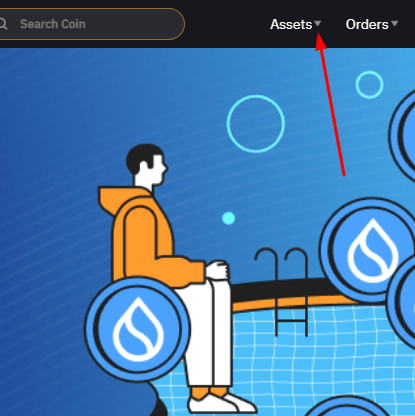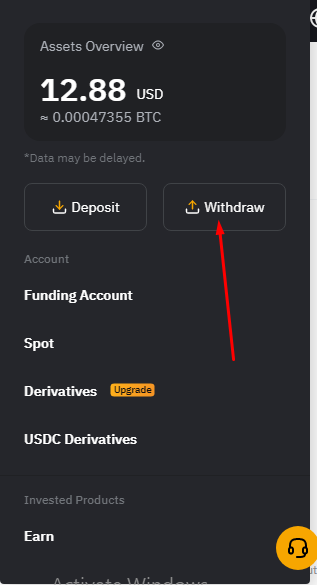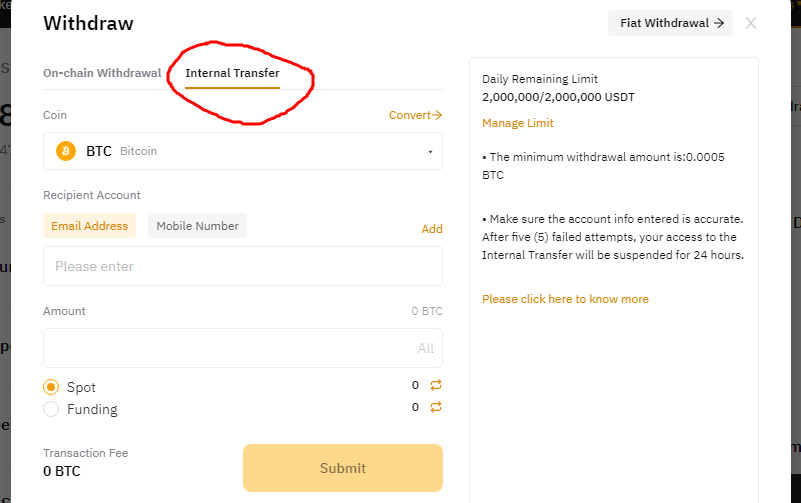In this post, I will show you how to send Bitcoin at little or zero transaction fees.
Have you ever been charged as high as ₦4,000 ($10) when sending Bitcoin and you got really vexed at the exchange?
This can be very annoying. But it’s not the fault of the exchange, and there are ways to avoid the high fees.
You will learn all about it in this post.
You will also learn how these fees are calculated and the measures in place to reduce them.
So, if you are ready, let’s get started.
Post Summary
- 4 Ways To Send Bitcoin With Little Or No Transaction Fee
- How Are Bitcoin Transaction Fees Calculated?
- Measures Taken To Reduce Bitcoin Transaction Fees
- Conclusion
So, sit back and enjoy this post.
4 Ways To Send Bitcoin With Little Or No Transaction Fee
Here I have listed four ways that you can send Bitcoin with a low or no transaction fee.
I will be very elaborate, and if you don’t mind, let’s delve into the list.
- Send Bitcoin To Email Address
- Send Bitcoin from Blockchain.info Wallet
- Send Altcoins
- Use the Lightning Network (LN)
1. Send Bitcoin To Email
Some exchanges allow you to send Bitcoin to other users of the same exchange by email.
Examples of such exchanges are Bybit, Gate.io, and OKX.
Since this is within the same exchange and transactions are not confirmed on the blockchain, you will pay zero in fees.
The email address has to be the one they registered their account on the exchange.
Let’s see how this works using Bybit as an illustration:
Let’s say Judith and Esther are business partners who transact frequently with crypto.
If Judith wants to make a payment to Esther’s Bybit account, she can do so for zero transaction fee.
All she needs to do is ask for Esther’s email address, the one she used to register her Bybit account.
Having received Esther’s email address, she continues with the following steps:
- Sign in to her account Bybit account and navigate to “Asset”.

2. Select “Withdraw” from the options displayed.

3. She once again selects the “Withdraw” option from the new interface that displays. When she does so, a withdrawal box is displayed, and she selects “Internal Transfer” from the menu at the top of the box.

She proceeds to fill out the form by entering the necessary details, including Esther’s email or phone number.
She also selects the account she wants to withdraw from and finally clicks “Submit”.
Shortly after the transaction is initiated, Bybit delivers it to Esther in a timely manner.
By doing so, Judith has escaped paying a high gas fee for her transaction to go through. You, too, can do the same.
Remember you can also do so on these two other exchanges: Gate.io, and OKX.
2. Send Bitcoin from Blockchain.info Wallet
One of the unique features of the Blockchain Wallet is its ability to send Bitcoin to any Bitcoin wallet address at a low transaction fee.
This is because the blockchain.com wallet has a feature that allows users to enter their fees or select from two calculated options.
Note that the lower the fee you enter or choose, the longer it takes for your transaction to be confirmed.
Naturally, there are two factors an exchange looks at when calculating Bitcoin transaction fees:
- Bitcoin Network Condition
- Transaction Size
(You don’t need to worry about these two factors as I will still explain them in a later part of this article)
Then they offer miners a fee high enough for speedy confirmation of their transaction.
However, blockchain.com addresses this by offering users three options:
- Priority Fee| 2. Regular Fee| 3. Advanced User
Priority Fee
This fee is higher than the regular fee and gets your transaction confirmed in under 1 hour.
Regular Fee
This fee is lower than the priority fee but your transaction may take over an hour to be confirmed.
Advanced User
This fee is a bit technical. It allows you, to set your fee in units of satoshi per byte (sat/b) i.e. 0.00000001.
You can customize your transaction fee manually with this option. That is if you already have advanced knowledge of Bitcoin fees and how it works.
Alright, enough talking, let’s go over to the next point.
3. Send Altcoins instead of Bitcoins
Sending altcoins instead of Bitcoins is another way that you can evade high Bitcoin transaction fees.
This is because the network fee for some altcoins is lower than that of Bitcoin.
Therefore, instead of sending bitcoins with a high fee, it becomes better to convert your Bitcoin to altcoins.
It might be surprising to know that converting Bitcoin to altcoin is not as high as the Bitcoin transaction fee even when combined with the exchange fee.
(This however depends on the exchange and the volume of coin you are converting)
You can actually be charged zero fees on an exchange when converting Bitcoin to altcoins.
You can also try sending Bitcoin from another blockchain version with a cheaper transaction fee.
4. Send Bitcoin Using the Lightning Network (LN)

Lightning Network is one of the blockchain-related projects that is still in the pipeline.
This project was proposed by Joseph Poon and Thaddeus Dryja to tackle the problems of scalability and high fees on the Bitcoin network.
It is a sort of decentralized network that enables the transfer of payments outside the blockchain network.
Using the Lightning network, you and your counterparty can generate a bi-directional payment channel that will enable you to transfer payments with low transaction fees.
The only fees that are required are:
- The opening fee (that will open your transaction on the blockchain)
- The closing fee (which will confirm only your most recent transaction on the blockchain)
Aside from these two fees, you can make thousands and millions of transactions with your counterparty offline without incurring transaction fees.
No need to worry about how it works, as I will dig further into it in a major subheading below.
So far, I have brought to light everything that you needed to know in “4 ways to send Bitcoin with no Fees”.
But how are these fees even calculated?
Find out in the next subheading.
How Are Bitcoin Fees Calculated?
As stated earlier at the beginning of this post, lots of our readers have complained about the high rates of fees charged by some exchanges.
The truth is that these exchanges have nothing to do with transaction fees.
Transaction fees are strictly spent by miners; hence, they are also called “Miners/Network fees”.
You can imagine the transaction fee as a tip given to miners to induce them to confirm your transaction on the blockchain.
The two factors that are considered before calculating Bitcoin transaction fees are:
Bitcoin Network Condition and Transaction Size
Bitcoin Network Condition
Miners calculate Bitcoin transaction fees depending on how congested or free the Bitcoin network is.
Ordinarily, each transaction that is sent to be confirmed on the blockchain is first deposited into the Memory Pool (Mempool).
The amount of transactions that can be inserted and confirmed into one block has a limited capacity of 1MB.
Based on this protocol, it takes about 10 minutes (confirming 4 to 6 transactions per sec) for 1 block to be included on the blockchain.
Unfortunately, if there are a lot of transactions to be confirmed at once, there will be congestion in the Bitcoin network.
Thus, considering the size of the memory pool and the size of awaiting transactions, miners prioritise your transaction depending on the fee attached to it.
However, if there is no congestion, the fee becomes stable, and transactions are confirmed without delay.
Transaction Size
The larger your transaction size, the higher the network fee that you may have to pay.
Every transaction sent to the Bitcoin network contains a piece of code that displays its transaction size.
The larger the size of your transaction, the more space it takes up in the mempool.
As stated above, blocks are constrained to a maximum size of 1MB.
It would be noteworthy to state here that the size of a transaction is not determined by the amount of Bitcoin that you are sending.
Instead, you can imagine it to be the number of megabytes a file in your computer is carrying.
So if your transaction size is big, the only way miners will want to confirm your transaction quickly is when a high fee is attached.
These two factors that I have discussed with you are some of the challenges faced by the Bitcoin network.
As a result, there has been a spike in the Bitcoin transaction fees.
I hope that I have made a lot of sense to you.
But are there any measures in place to mitigate the high fees?
Find out for yourself below.
Measures Taken to Reduce Bitcoin Transaction Fees
In order to improve Bitcoin’s scalability, Bitcoiners came up with certain measures.
These measures can improve the adoption of Bitcoin and make it a reliable means of making remittances.
Here are the two measures:
Segregated Witness|Lightning Network
Segregated Witness (SegWit)
Segregated Witness is an upgrade made to the Bitcoin network in 2017.
However, it was first proposed by Pieter Wuille at a Bitcoin conference held in 2015.
Now, what does this mean, and how does it intend to patch up the Bitcoin flaws?
For a better understanding, let us first split and analyse the different words that were combined to make up this word.
Segregate means to separate and Witness represents transaction signature.
Thus, putting these words together, we have: separate transaction signatures.
Hope we are still riding together.
SegWit (for short) is an attempt or a process made to increase the size of a block on the blockchain by removing signature data from Bitcoin transactions.
This optimization made to the Bitcoin network will increase the size of a block from 1 MB to 4 MB.
This way, more transactions will be confirmed quickly at any given time.
SegWit aims to solve three problems in the Bitcoin network, and I will list them below:
- Scalability: To enable the easy flow of transactions on the network.
- Malleability: To stop con bitcoin recipients from stealing bitcoins by altering the sender’s address.
- High Transaction Fee: To make the transaction fee minimal, SegWit causes more transactions to be confirmed at a time, thus reducing the fees.
So Bitcoin wallets that implement SegWit have lower fees than Non-Segwit wallets.
However, this proposal flared up a lot of disagreement and dissatisfaction in the crypto community.
Lightning Network
This measure is a better way of scaling Bitcoin transactions than the SegWit approach.
The Lightning Network has been proposed as a layer 2 solution to the Bitcoin network.
It is a peer-to-peer second-layer payment network built on top of the blockchain network.
The idea is to spike Bitcoin scalability by enabling small payments to be transacted off-chain without having to record each one of them on the blockchain.
Here, is how it works:
Before Lightning Network would work; a bi-directional payment channel must be created as a smart contract between two counterparties.
To create a payment channel, the two parties involved must open a transaction by funding a 2-of-2 multi-sig wallet on the Bitcoin network.
Alright, enough of the theories… Let’s take a more practical approach.
Let’s say Judith pays a TV subscription fee to Esther every single minute.
By now, I know you must have started calculating the transaction fee for each payment confirmed on the blockchain.
For Judith to evade the bitcoin fees that these payments would attract, she opens a payment channel with Esther by funding a 2-of-2 multi-sig wallet on the blockchain.
When this happens, both of them can transact directly without having to pay Bitcoin transaction fees.
This payment channel will remain private to them; Judith and Esther will be the only ones to keep a record of their transactions.
However, if Judith and Esther decide to close this payment channel, the Bitcoin network will only charge them a fee to confirm their last transaction.
Now, you see how much transaction fees can be slashed if this measure is applied to the Bitcoin space.
Read more: Lightning Network: Is It Bitcoin’s, Silver Bullet?
Conclusion
Finally, I have come to the end of this post.
I am glad that I solved your problem; gradually taking bit by bit every single detail in this post.
We have covered everything that is needed to know about Bitcoin transaction fees.
So, you can tell me:
Have you sent Bitcoin with high stipulated fees? What was your experience?
Do you think the miner’s self-interest and not the Bitcoin network congestion or the transaction size are the causes of the high network fee?
Which of the two measures to scale Bitcoin do you prefer, and why?
You can put down your comments in the comment box below and do not forget to share this post with your friends.
Cheers!
Ps: If you want to learn how to trade cryptocurrencies profitably, we developed a perfect course to help you master Cryptocurrency Trading.
Go to www.ctmastery.com to enrol.
Also, Read;
- What is Bitcoin
- Crypto-Trading Tutorial – How to Always Win |The QF Blueprint
- 12 Proven Ways to Earn Bitcoins for Free in 2020 & Beyond
- How to Create and Fund a Bitcoin Account (Wallet) in Nigeria (2020 Update)
- Beginners Guide to Crypto Trading| 5 Top Crypto Trading Platforms



Please what does it take to benefit in this platform of bitcoin investment